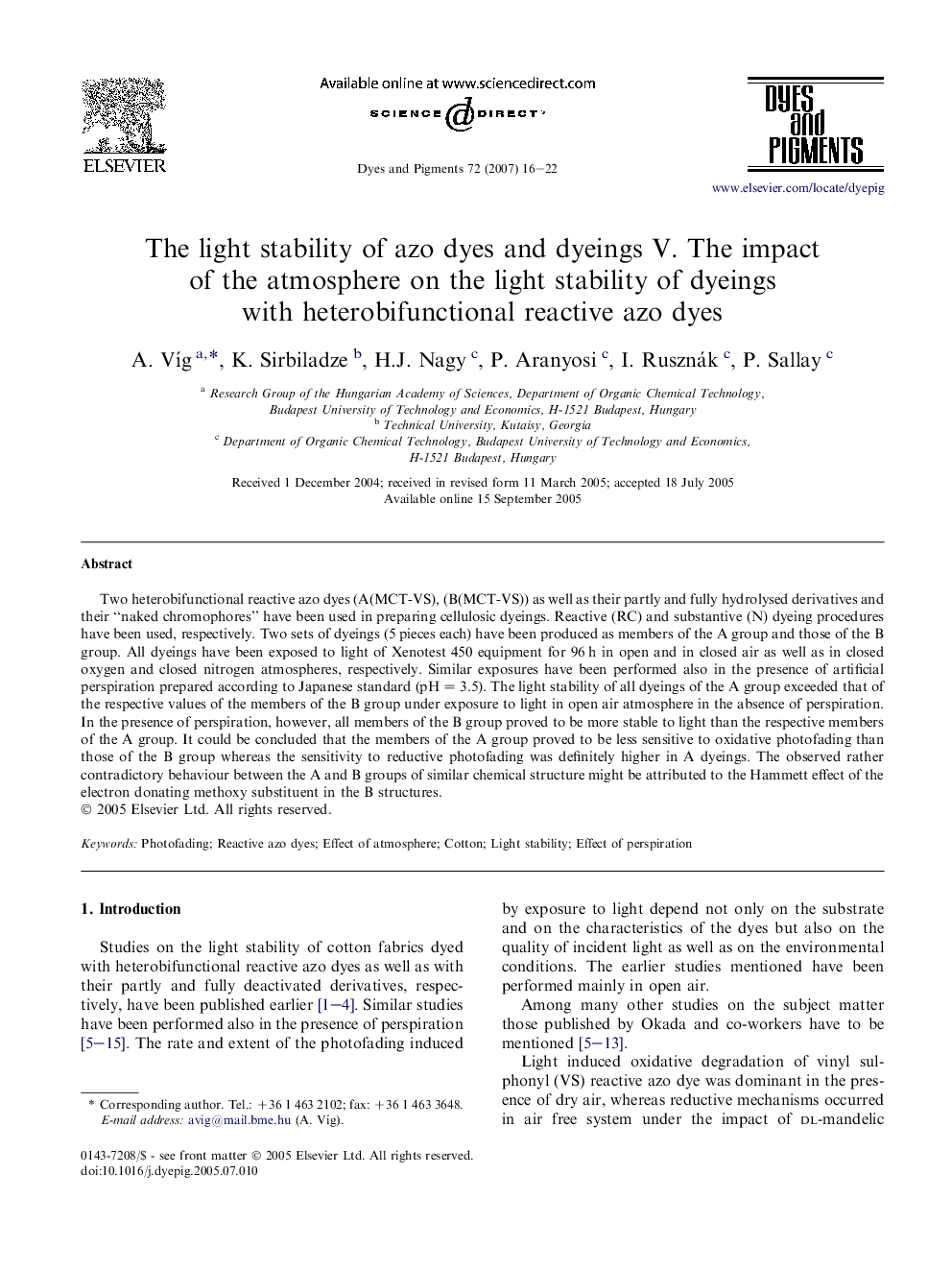| Article ID | Journal | Published Year | Pages | File Type |
|---|---|---|---|---|
| 178410 | Dyes and Pigments | 2007 | 7 Pages |
Two heterobifunctional reactive azo dyes (A(MCT-VS), (B(MCT-VS)) as well as their partly and fully hydrolysed derivatives and their “naked chromophores” have been used in preparing cellulosic dyeings. Reactive (RC) and substantive (N) dyeing procedures have been used, respectively. Two sets of dyeings (5 pieces each) have been produced as members of the A group and those of the B group. All dyeings have been exposed to light of Xenotest 450 equipment for 96 h in open and in closed air as well as in closed oxygen and closed nitrogen atmospheres, respectively. Similar exposures have been performed also in the presence of artificial perspiration prepared according to Japanese standard (pH = 3.5). The light stability of all dyeings of the A group exceeded that of the respective values of the members of the B group under exposure to light in open air atmosphere in the absence of perspiration. In the presence of perspiration, however, all members of the B group proved to be more stable to light than the respective members of the A group. It could be concluded that the members of the A group proved to be less sensitive to oxidative photofading than those of the B group whereas the sensitivity to reductive photofading was definitely higher in A dyeings. The observed rather contradictory behaviour between the A and B groups of similar chemical structure might be attributed to the Hammett effect of the electron donating methoxy substituent in the B structures.
